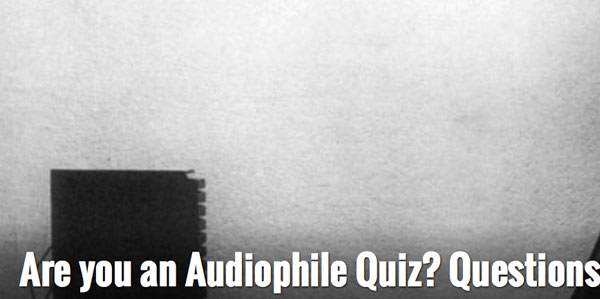Recording Engineers Are Not Audiophiles? Part 2
Continued from yesterday…
The commentator moves on to DTS CDs. These were CDs that couldn’t be played in a normal CD player because they were encoded in DTS from a multichannel “surround music” masters. They preceded DVD-Audio and SACDs in being able to deliver “lossy” surround music. When the two competing “lossless” audio formats SACD and DVD-Audio came along in 2000, many of the 5.1 mixes done by engineers working at DTS were licensed back to the labels and released as DVD-Audio discs.
The SACD and DVD-Audio formats claimed to offer higher dynamic range than CDs but in fact, the original masters were analog tapes and didn’t require any more than 16-bits…the spec for CDs. Having a large bit bucket doesn’t mean that audio with limited dynamic range will fill the new space.
“As Bob Stuart of Meridian created his MLP compression scheme, storage space on a DVD increased from 4.9 gigabits to almost 10 gigabits and suddenly the movie soundtracks on DVD had greater clarity and played louder than any previous format.”
If this is an example of “marketing oriented” speak, readers are in big trouble. Here are the facts:
MLP (Meridian Lossless Packing) was developed in response to an RFP from the DVD Forum (request for proposal). This governing body needed a “lossless” encoding scheme that would allow 5.1 channels of 96 kHz/24-bit PCM audio (13.94 Mbps) to be played back from a DVD disc (which has a top bandwidth of 10 Mbps). The storage space on a DVD didn’t change as a result of MLP. It’s fixed by the DVD specification. The capacity of DVDs varies on the number of layers and the number of sides in use. A single sided, single layer disc holds 4.7 GigaBytes (NOT 4.9 gigabits!), while a dual-sided, double layer DVD increase that to over 17 GigaBytes. Most DVDs are single sided, dual layer and hold 8.4 GigaBytes.
The MLP encoding format was never used in conjunction with “movie soundtracks”. It was used exclusively for music-only DVD-Audio discs. And finally, MLP didn’t produce “greater clarity” or “play louder” than any other format…it simply ensured that no data was lost during the encoding and decoding of stereo or multichannel music. The source audio was “squeezed” (data compression) to fit within the bandwidth requirements of DVD discs and then restored to the original fidelity when played back.
Blu-ray discs include a variety of audio formats including Dolby TrueHD (which is actually based on the MLP algorithm discussed below) and DTS HD Master Audio. Both are lossless and capable of multichannel surround at specs higher than CDs. They can store 25 GigaBytes (not gigabits) per layer up to 50 GigaBytes and transfer up to about 35 Mbps or three and a half times more than a DVD (NOT 1.65 gigabits). The fidelity of the audio doesn’t change based on the encoding format. A bona fide high-resolution audio track recorded and mastered at 96 kHz/24-bits will sound the same from a file, a DVD, or a Blu-ray disc regardless of the lossless encoding format employed. It won’t be louder.
To be continued…


I don’t know how old you are Mark, but back in the days of my young Golden Ears obsession I purchased a piece of hardware called the Yamaha DSP-1. It was the first full surround sound processor that signaled at that time the death knell of two channel hi-fidelity audio. And it wasn’t very clean or life-like either as it had background residual noise inherent in the rear channel . It was originally designed as a six channel system and lacked a center speaker. Well, not really. Your two main fronts were your center, behind and to each side of those were your front effects speakers and then mounted higher up on a wall behind your listening position (which was centered between mains and rear) were your rear effect surrounds. Both sets of effect front and rear were powered by a separate amp. Six and then seven channel surrounds did not have to be high fidelity as your processed sounds were computer based reflections taken by mike from various cathedrals, clubs, and stadiums. A novelty in it’s day that started the whole shebang of home theater. I’d read that the expectation was to eventually go to a max of ten channels. I had wires running under my floors and up to those surround through the walls as both sets were mounted higher than the mains. Thankfully ten channel didn’t catch on.
Real audiophiles have SR dots all over their systems, ultra expansive power cords, USB and other cables, etc etc. You guys have none of that so your ears are not up to grade and neither is your hardware or you’d be in the know about this .